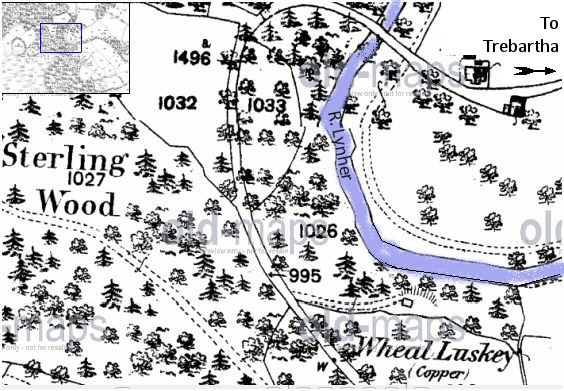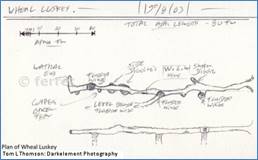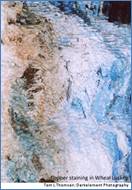|
WHEAL LUSKEY
 On Monday afternoon general meeting of the shareholders Wheal Luskey was held at Golding’s Hotel, Callington. Mr. E Nicolls was voted to the chair. The accounts produced, for two months, showed that the labour costs and merchant's bills for August amounted to £41, and for September to £31, leaving a balance in hand of £8, the balance hand July being £81. The costs had been charged to the end of next week by a clerical error. The mine was young one and the staff was small. But very good and necessary work had been done, and the shareholders had had their money’s worth. Up to the present, operations had been confined to driving an adit, and they must be fully twenty fathoms deep already. The lode itself had varied very much in character. It had always continued a good width, and presented a masterly appearance. It had already yielded stones of copper, which had been assayed, but not in sufficient quantity to make use of. The lode was between five and six feet wide, perfectly independent of the granite walls on either side, and the burrow [ a heap of waste rock] had a coppery look. The ore that had been assayed was grey, and had yielded a fair produce. The ground could be proved, without the expense of machinery, for some time to come. On Monday afternoon general meeting of the shareholders Wheal Luskey was held at Golding’s Hotel, Callington. Mr. E Nicolls was voted to the chair. The accounts produced, for two months, showed that the labour costs and merchant's bills for August amounted to £41, and for September to £31, leaving a balance in hand of £8, the balance hand July being £81. The costs had been charged to the end of next week by a clerical error. The mine was young one and the staff was small. But very good and necessary work had been done, and the shareholders had had their money’s worth. Up to the present, operations had been confined to driving an adit, and they must be fully twenty fathoms deep already. The lode itself had varied very much in character. It had always continued a good width, and presented a masterly appearance. It had already yielded stones of copper, which had been assayed, but not in sufficient quantity to make use of. The lode was between five and six feet wide, perfectly independent of the granite walls on either side, and the burrow [ a heap of waste rock] had a coppery look. The ore that had been assayed was grey, and had yielded a fair produce. The ground could be proved, without the expense of machinery, for some time to come.
Captain Skewis presented the report, in which he stated that the adit level had been driven on the lode eight fathoms through lode varying from four to six feet wide. When first cut it contained a large proportion of iron and caple  [tourmalinised/chloritised granite], but he was pleased to say that as the end was driven west into the hill, which would increase in height from about fourteen to seventy or eighty fathoms, the iron gave way to a very strong quartz, mixed with yellow copper or mundic [a Cornish mining term for the sulphide mineral pyrite]- altogether a very fine looking lode, and such as the agents believed would shortly produce large quantity of ore at a very small cost. It was difficult to find young mine with such prospects, the lode the end being six feet wide. It was resolved that the report should be adopted, and distributed amongst the shareholders, and that a call of 3d. per share, which would produce £150, should be made. [tourmalinised/chloritised granite], but he was pleased to say that as the end was driven west into the hill, which would increase in height from about fourteen to seventy or eighty fathoms, the iron gave way to a very strong quartz, mixed with yellow copper or mundic [a Cornish mining term for the sulphide mineral pyrite]- altogether a very fine looking lode, and such as the agents believed would shortly produce large quantity of ore at a very small cost. It was difficult to find young mine with such prospects, the lode the end being six feet wide. It was resolved that the report should be adopted, and distributed amongst the shareholders, and that a call of 3d. per share, which would produce £150, should be made.
The full article was also concerned with manner of funding a mining operations and relates a comparison of the cost book system with the limited liability system. Click on the cutting to read the full article.
|





